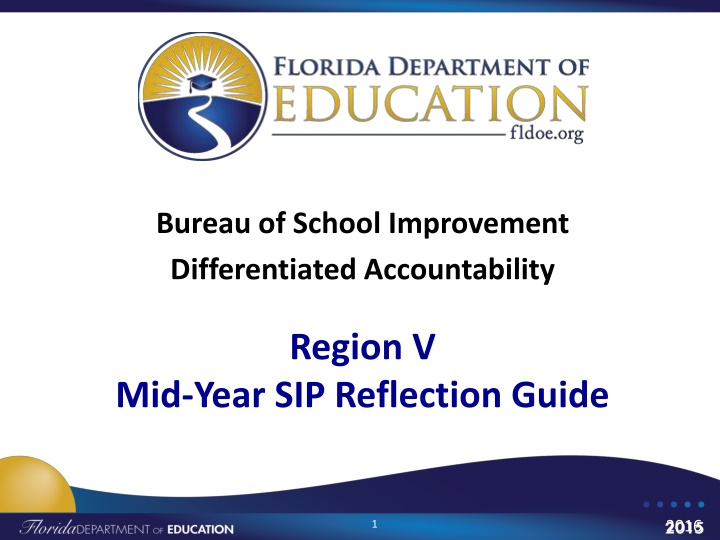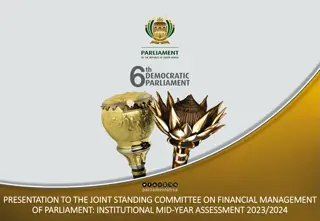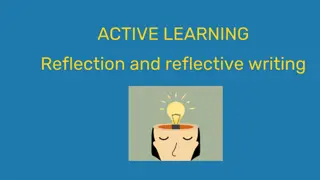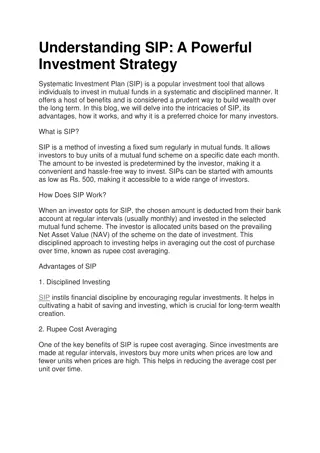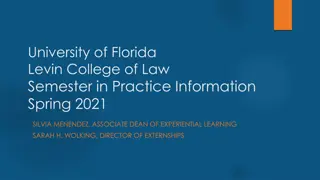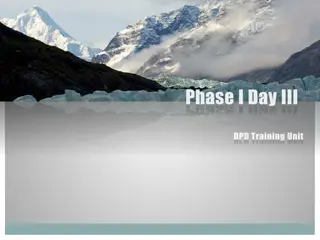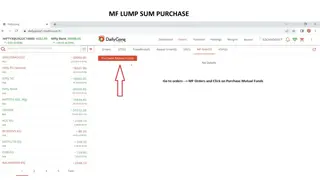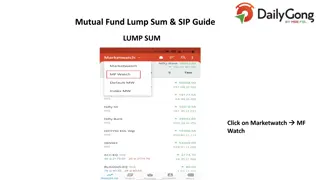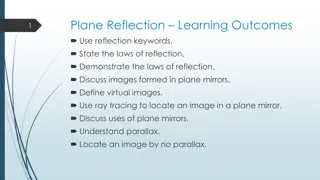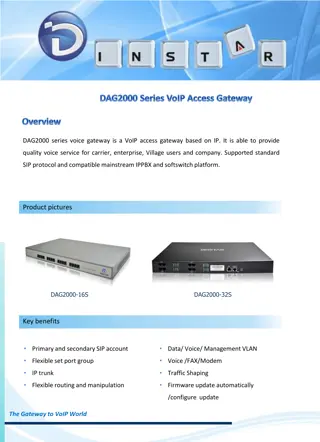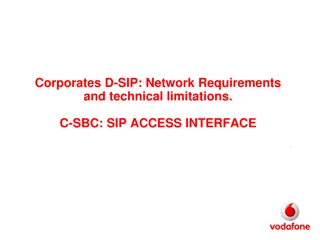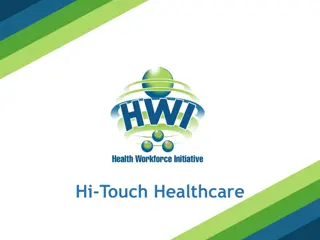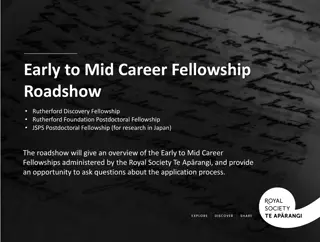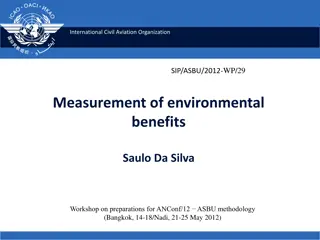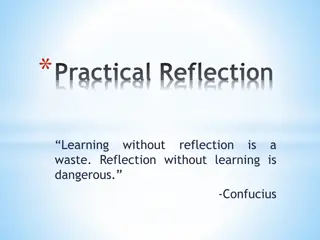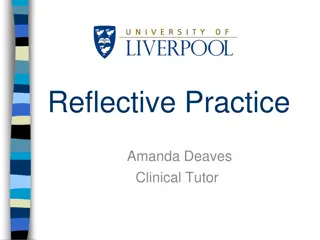Mid-Year SIP Reflection Guide
This guide aims to support school improvement through self-reflection in the middle of the academic year. It provides a structured approach for educators to assess progress, identify challenges, and adjust strategies to meet goals effectively.
Download Presentation

Please find below an Image/Link to download the presentation.
The content on the website is provided AS IS for your information and personal use only. It may not be sold, licensed, or shared on other websites without obtaining consent from the author.If you encounter any issues during the download, it is possible that the publisher has removed the file from their server.
You are allowed to download the files provided on this website for personal or commercial use, subject to the condition that they are used lawfully. All files are the property of their respective owners.
The content on the website is provided AS IS for your information and personal use only. It may not be sold, licensed, or shared on other websites without obtaining consent from the author.
E N D
Presentation Transcript
Bureau of School Improvement Differentiated Accountability Region V Mid-Year SIP Reflection Guide 2016 1
Purpose of Mid-Year Reflection Continuously problem solve how best to reach SIP goals. Engage in rich, collaborative conversations on goal achievement, strategy implementation and barrier reduction. Adjust strategies and resources as necessary to improve student achievement. 2016 2
Questions School Teams Will Consider Has our school made progress towards achieving the goal? Have the barriers we selected been eliminatedor reduced? Are our strategies being implemented with fidelity? What are our benchmarks for success? 2016 3
Who is Required to Complete a Mid-Year Reflection in CIMS? The Mid-Year Reflection is required for Focus, Priority, Former Fand School Improvement Grant (SIG) 1003(g) schools as indicated by the blue R icon on the CIMS Plans page. 2016 4
Mid-Year Reflection Timeline Step A Preparing for Mid-Year Reflection: Assemble evidence (quantitative data and qualitative evidence) to guide the leadership team in rich discussions and deep reflection. Step B Leadership Team Reflection and Problem-Solving: Meet as a leadership team with key stakeholders to analyze and reflect on evidence to guide the Mid-Year Reflection process. Step C Input Data in CIMS: Complete the Mid-Year Reflection tool in CIMS within 30 days of the release of your school s mid-year assessment data. 2016 5
Resources in CIMS Toolkit Link to CIMS: https://www.floridacims.org/ Resource Purpose Navigation Mid-Year Reflection Flow Chart Determine the next steps when answering yes or no while considering Mid-Year Reflections responses to questions in CIMS. Toolkit > Documents > Problem Solving Mid-Year Reflection Guidance Questions Delve deeper into the possible root causes why schools are or are not making progress towards achieving goals. Determine if barriers have been reduced. Determine if strategies have been implemented with fidelity. Toolkit > Documents > Problem Solving Mid-Year Reflection Facilitator Tool Provide structure for facilitating a mid-year reflection within specific time frames. Toolkit > Documents > Problem Solving Mid-Year Reflection Process Guide A step-by-step guide outlining the thinking behind the Mid-Year Reflection Process. Toolkit > Documents > Problem Solving Mid-Year Reflection How-to Guide for Schools A screen-by-screen navigation guide walking users through the steps of completing the Mid-Year Reflection in SIP. Toolkit > Documents > Navigation Guides 2016 6
Assemble Evidence and Analyze Data STEP A Does the evidence for Step 6 document the fidelity of the implementationof your Strategy? Does the evidence for Step 7 document the reduction or eliminationof your Barrier? 2016 7
Examples of Evidence State/District/School Summative and Interim Assessments Student Progress Monitoring Data Summative Assessments: Florida Standards Assessments (FSA); End-of Course Assessments (e.g. FCAT Science, Civics, Algebra I & II, Biology, American History).Interim Assessments: district and school created assessments; published tools (Achieve 3000 or iReady.) Formal progress monitoring tools: FAIR-FS, Reading Running Records; published assessments (such as Fountas & Pinnell Benchmark Assessment System); Lexile Level growth measures (such as Achieve 3000 or Scholastic Reading Inventory). Classroom based progress monitoring: unit and chapter tests; mini-assessments; notebooks, journals, formal papers, on-demand writing, writing process work, and other examples of performance based writing; lab reports and graphic organizers; samples of problem-solving. Assessment data for Tier II and Tier III intervention (RtI); implementation of strategic and intensive interventions and intervention programs (such as Fundations, Reading Plus) Classroom walkthrough data (e.g. iObservation, observation checklists); conferring and debriefing meetings; implementation of the coaching cycle, lesson study, collaborative planning, PLCs, data chats, and/or learning team meetings. Learning goals and scales; rubrics or checklists for evaluating student projects, experiments, reports, performances and demonstrations; anecdotal records of student observations and accountable talk. Trend data such as total student enrollment, enrollment by ethnicity, ELL, SWD, FRL and/or migrant status; attendance data including absence and tardiness; student referrals for in-school or out-of-school suspension; referrals for student support services, behavior support systems, RtI. Parent, student, and teacher surveys; school climate and culture surveys; minutes or notes from PLCs, staff meetings, IEP meetings, and/or parent and community events. Master schedules; teacher evaluation data (such as iObservation); curriculum resources including pacing guides, curriculum scope and sequence, and/or Instructional Focus Calendars; development of goals and scales, unpacking the standards, and collaborative lesson planning; learning team/data chats; progress reports and report cards. Student Diagnostic and Intervention Assessments Professional Growth and Development (PD to Practice) Student Performance Based Assessments Demographic and Early Warning Systems Data Perception/Survey Data Systems Data Budget Related Data Event expenditures such as field trips and parent nights; expenditures for student support; substitute expenditures and trends (analysis of substitute needs by teacher, purposes, and timing when substitute needs occur); instructional materials, technology purchases and other purchase orders; repairs. 2016 8
STEP B Has the goal been achieved? How do the structures and systems in place at our school ensure all facets of the school culture create predictable environmentsand a school climate that supports our SIP goal? What are the gaps that exist between our current stateand our desired state? How will we address them between now and the end of this school year? 2016 9
Is desired progress being made to accomplish the goal? Describe the quantitative and/or qualitative evidence you used to document progress towards achieving your SIP goal. What evidence (from multiple data sources) is your school using to monitor for sustained, continuous improvement? Are your data meetings to measure and monitor goal progress regularly scheduled, with all critical decision makers present? How do you know that progress is being made? 2016 10
Have the originally targeted barriers been eliminated or reduced? What evidence do you see that the indicated barrier has been reduced or eliminated? What evidence do you have that the barriers are wide- reaching and will help you achieve your goal? If progress towards eliminating the barrier is not sufficient, where or what is the breakdown? Did you identify other barriers beyond what you selected in SIP that could serve as effective re-entry points into the plan? 2016 11
Are the original strategies being implemented with fidelity, as designed? Were decisions to continue, intensify, modify, or terminate strategies or action steps based on specific evidence? 2016 12
Where are we in the process of School Improvement? How will progress towards our goal impact student achievement? What is our desired state? What gaps exist between our current state and our desired state? 2016 13
Optional slide templates for Goal: preparing for reflection meetings, if needed Barrier: Strategy: Evidence from Step 6 (List all) Evidence 1 Evidence 2 Evidence 3 Evidence 4 Does the evidence collected in Step 6 demonstrate that the strategies were implemented with fidelity? 2016 14
Optional slide templates for Goal: preparing for reflection meetings, if needed Barrier: Strategy: Evidence from Step 7 (List all) Evidence 1 Evidence 2 Evidence 3 Evidence 4 Does the evidence collected in Step 7 demonstrate that the barriers were reduced or eliminated? 2016 15
Optional slide templates for Goal: preparing for reflection meetings, if needed How will progress towards our goal impact student achievement? What is our desired state? What gaps exist between our current state and our desired state? 2016 16
Remember to complete the Mid-Year Reflection in CIMS within 30 days of the release of your school s mid-year assessment data. 2016 17
For More Information and Support Gayle Sitter Regional Executive Director Gayle.Sitter@fldoe.org Bryan Jones Regional Assistant Director Bryan.Jones@fldoe.org Norman Alford School Improvement Specialist Broward County Norman.Alford@fldoe.org Zakia Garner School Improvement Specialist Miami-Dade & Monroe Counties Zakia.Garner@fldoe.org Dr. Carol Cron School Improvement Specialist Collier & Lee Counties Carol.Cron@fldoe.org Margaret ( Peggy ) Livingston School Improvement Specialist Palm Beach, Hendry, & Glades Counties Margaret.Livingston@fldoe.org 2016 18
